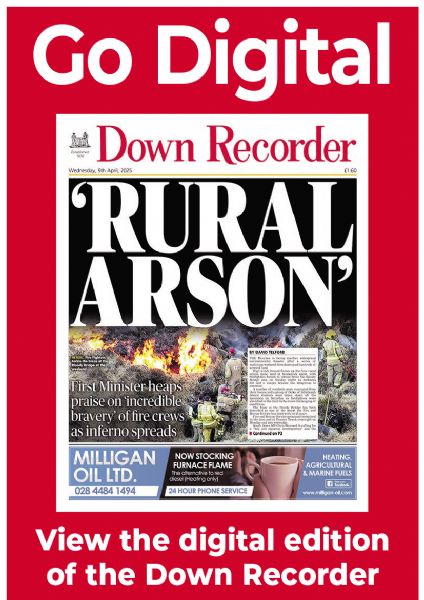High Cross is central to museum extension
High Cross is central to museum extension
2 September 2015
AN exciting new chapter in the history of the Down County Museum will be formally opened in just under two weeks’ time with the official unveiling of the new High Cross gallery.
The unveiling of the £650,000 extension — which houses the original High Cross formerly located outside nearby Down Cathedral — also coincides with the launch of new permanent exhibitions at the English Street complex and the opening of the Downpatrick museum’s new tearoom.
The Raising the Cross in Down permanent exhibition tells the story of the Downpatrick High Cross and its place in the early Christian tradition of Co. Down.
A fascinating collection of artefacts illustrates the story of the development of Christianity in the locality, with the centrepiece being the 10th century High Cross displayed in a specially constructed gallery. The unique object has been carefully moved from the Cathedral to ensure its preservation for future generations and makes a stunning impact, highlighting its importance in local history.
The new gallery tells the story of how St Patrick first raised the Cross in the area in the 5th century and how the monks of the monastery of Down later set up the High Cross in about 900 AD.
Having been dismantled in 1729 and the pieces dispersed, the Cross was reconstructed outside the east end of Down Cathedral in 1897. Due to severe weathering, the Cross was removed to the County Museum where it was conserved and reconstructed in a protected environment between 2013 and 2015. An exact replica of the ancient Cross, made of the same type of Mourne granite, was placed outside the Cathedral last year.
The new exhibition follows the story of the High Cross in parallel with the story of St Patrick’s legacy; the establishment of Christian sites on the Hill of Down and in the surrounding area.
The High Cross has been reconstructed with a new socket stone, based on the remains of the original in Down Cathedral, and a new capstone, both made of Mourne granite.
The carvings on the Cross have been carefully lit to show the details of the craftsmanship of 1,100 years ago, while display panels close to the Cross interpret the images carved on the shaft and head of the Cross, offering clues to the overall meaning of the carved programme.
A number of other stones carved with crosses are now on display in the gallery, including examples from Raholp, Struell, Maghera and Nendrum. The gallery also includes many other stone items, such as a holy water stoup from St John’s Point Church, querns for grinding grain and architectural fragments from local abbeys. Objects found in the excavations on the Hill of Down in the 1980s are also on display thanks to the Department of the Environment.
Special features of the new exhibition include the 17th-century silver shrine of St Patrick’s Jaw, drawings of the 1,200-year-old St Patrick’s Cross and granite replicas of parts of the Downpatrick High Cross to touch. A short film telling the story of how the Cross was moved, replaced with a replica and reconstructed in the gallery, can also be viewed.
The windows of the new gallery look out on a historic vista of drumlins, water and monuments, while a translucent painting of the view as it would have appeared in 1200 AD has been adhered to the window in order to interpret the amazing landscape that can be seen from here.
The other new exhibitions include Harvest from Land and Sea which informs visitors how the local landscape, culture and identity have been shaped by those working on the land and sea, while the At Present Confined: Life in the old Gaol of Down exhibition uncovers the fascinating story of the Gaol and tells the stories of some of the prisoners confined there between 1796 and 1830.
The new Cathedral View tearoom opens to the public from Wednesday, September 16, offering great views of the Cathedral, the Hill of Down and across the Quoile River towards Inch Abbey.
The tearoom is run by Mainstay DRP, a Downpatrick charity which provides respite and residential care and vocational training for adults with a learning disability or autism.


